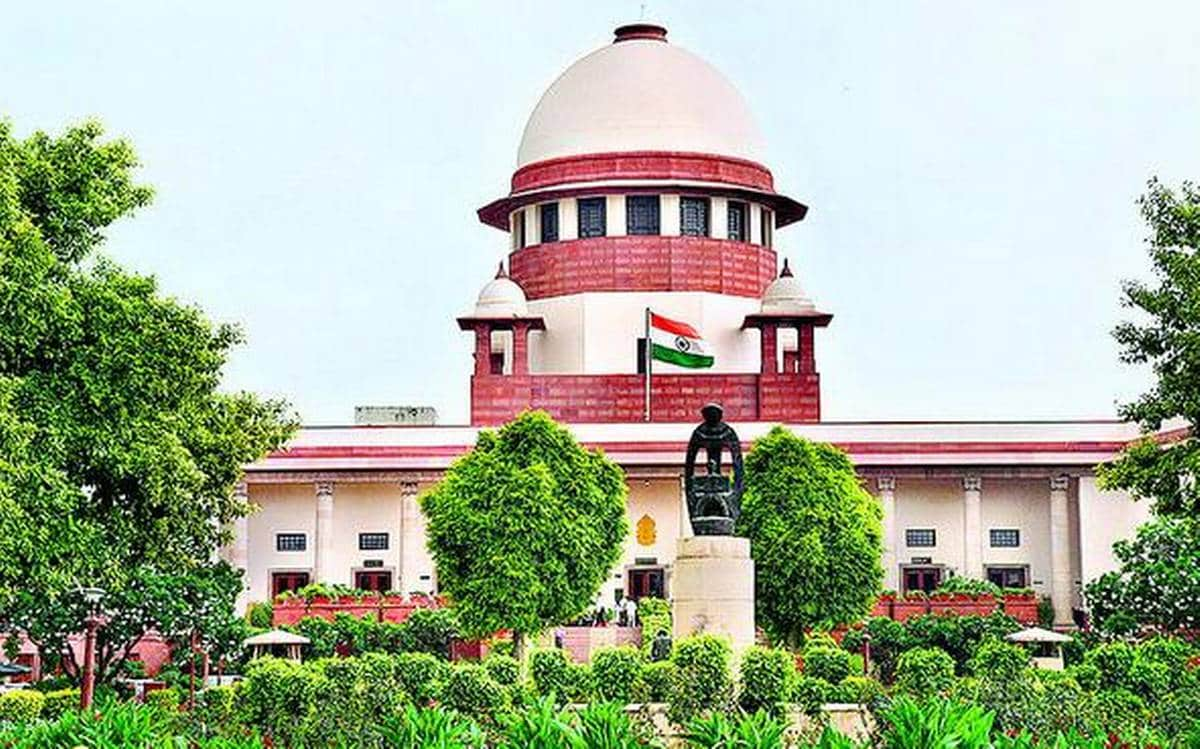The Indian Evidence Act of 1872 popularized the ideas of relevance and admissibility. Both appear to be the same to the naked eye and to most people. Principles of evidence, on the other hand, have a variety of meanings and aims. For those who are new to the field of law, the author here tries to explain topics through cases.
Keywords:-
• Relevancy
• Admissibility
INTRODUCTION
It is critical that the Law of Evidence be preserved and upheld. It can be employed in both the civil and criminal arenas of the law. It is beneficial to both the civil and criminal legal systems. The law of evidence aids in the enforcement of civil and criminal rights and punishments. Even procedural rules like the Code of Civil Procedure or Code of Criminal Procedure rely on evidence law for guidance. To have a successful criminal or civil case, the law of evidence is essential. The purpose of evidence law is to aid the court in separating the unimportant facts from the important ones in order to reduce the amount of time spent in court. The court determines what is essential for the prosecution or plaintiff to prove his or her case against the defendant or the state to prove a crime against the accused. The law of evidence is used by the court to establish what facts are essential. Two fundamental concepts of evidence law have been developed to help with this. Relevancy and admissibility are two separate issues.
Words such as “relevant” and “admissible” are frequently used in legal discourse. Even in the court of law, lawyers frequently use both interchangeably. The law of evidence relies heavily on both principles.
MEANING AND PRINCIPLES OF RELEVANCY
Connectivity is the key to relevance. Having a connection to something else. According to Webster’s Collegiate Dictionary, “relevant” means “connected with what is happening, relating to a subject or to something happening.” It is “having significant and demonstrable bearing on the matter at hand”. Another definition is “providing evidence that tends to establish or deny the thing at issue or that is being discussed.” The word “relevant” comes from the definition given by Collins Dictionary, which states that “the relevant object of a certain sort is the one that is appropriate.” Relevance is defined as “appropriate, apposite, relevant, germane, material, pertinent, pointed, and related.” These are all synonyms for relevancy.
A truth is significant to another, according to Jeremy Bentham’s definition, if it causes or tends to cause persuasion in the mind about the existence of some other fact .
Relative to the absence of the relevant evidence, the likelihood that an assertion is true increases or decreases” (looking for probative value).. The relationship between a piece of evidence and the hypothesis being tested is what we mean by “relevance .”
Relevancy is defined as the degree of relationship and probative value between a fact offered in evidence and the issue to be proved in Key to Evidence, written by Janab. A pair of facts is said to be “relevant” if they are connected in such a way that, in accordance with the ordinary sequence of events, either considered alone or in connection with other facts, demonstrates or makes plausible the past, present, or future existence or lack thereof of the other .
Relevance is defined in Indian evidence law as a fact that falls within any of the terms of the relevance chapter, from section 6 to section 55, in short. In addition, Section 5 explains how Sections 6 and 55 should be interpreted in respect to each other. It signifies that a fact should be relevant to the problem at hand. If any of the concepts from Sections 6 to 55 apply to the facts at issue, then that fact is significant. Sections 6 to 55 are all statements of law, hence the question of their relevance is a legal one.
As a result, saying that something is relevant is not a logical statement. Because of this, it’s also not a fact that anything is relevant. Despite the fact that a fact may be important to the situation at hand, it is only relevant if it falls within the scope of sections 6 to 55. Interestingly, however, anything that is logically important becomes relevant under any of the sections 6 to section 55 as evidence law, despite the fact that these sections were crafted with great care and attention to detail. It is the judge’s job to determine whether or not a fact exists based on the testimony of the witnesses verbally or documentarily. When a witness presents facts to the court, either verbally or in writing, the opposing party must object immediately if the information is irrelevant. As a matter of law, relevance can be argued at any point in a court case. The trial court should note in the order-sheet what the irrelevant fact was, what objections were made to it, and the basis for deeming it relevant, if any, so that it may be examined by the higher courts.
It was held by the court in Knapp v. State that the standard for determining the relevance of evidence is whether or not proving it would help decide the major question at trial. In other words ,
For example, the Bombay High Court recently revised numerous elements of the law of relevance to determine whether facts qualify as pertinent in L. C. Bhatia v State . A fact in issue or a relevant fact is “required to explain or introduce a fact; facts that support or rebut an inference suggested by a fact; facts that establish the identity of anything or person whose identity is relevant; facts that fix the time and place at which any fact in issue or relevant fact happened; facts that show the relation of parties by whom any fact in issue or relevant fact was transacted.”
MEANING OF ADMISSIBILITY
“The quality of being accepted or valid, especially as evidence in a court of law,” admissibility is defined as “n. the characteristic of being acceptable or valid.” The process by which the court decides whether or not the relevant evidence can be admitted by the court under the guidelines established by the Law of Evidence is known as admissibility. “The term admissibility may be used to refer to. Evidence that may be presented in a legal proceeding.” The ability to get in “legal principle that decides whether or not evidence is admissible in courts of law. Even if the evidence is important, it must still be admissible in court.”
RELEVANCY AND ADMISSIBILITY
The idea of admissibility is typically contrasted from relevance. Logic and common sense, practical or human experience, and knowledge of current events define relevance. It is important to note, however, that the admission of evidence is based first and foremost on its relevancy to a high degree of probative value as well as its compliance with any applicable exclusionary standards. Admission, not relevance, is the primary determinant of a case’s admissibility in court. Because of this, logical relevance and legal relevancy are sometimes used interchangeably. Lawyers are responsible for determining whether or whether evidence is relevant to a case, which is a matter of fact. The Supreme Court, in Ram Bihari Yadav vs. the State of Bihar , found that a person’s constitutional rights were not violated “Relevance and admissibility are often used interchangeably, but their legal meanings differ because facts that are relevant are not always admissible; similarly, facts that are admissible can sometimes be irrelevant, such as questions permitted in cross-examination to test the veracity or credit of witnesses, but which are not relevant, are admissible nonetheless. This is a common misunderstanding. Evidence’s probative value is determined by the weight it should be given based on the specifics of each case.” According to Section 136 of the Act, the court can determine whether a fact is important and the way in which it must be proven before it can be admitted. It is the court’s responsibility to ensure that all relevant information are presented to the court and to eliminate any extraneous facts. As early as section 5 on relevance, it provides that testimony may be submitted in any action or case as to whether every fact in question and such other…facts as subsequently will be determined to be relevant, and of no others, exists or does not exist. Indeed, judging on the issue of relevance can be a tough task for the Trial Judge because of its subtlety. Ideally, he should accept rather than deny the facts in questionable circumstances.
When evidence is made acceptable by the Evidence Act and when it is a widely recognised exemption to the rule against hearsay, the evidence does not become inadmissible simply because direct evidence is also available. “
When evidence is presented under Section 5 to 55 of the Evidence Code, it’s admissible in court. Due to other parts of the Act, relevant facts may not be admitted under Section 5 to 55 if they conflict with other sections of the Act. The Act’s major exclusionary criteria, as stated above, remove significant facts from consideration. Witness statements, confessions and proof of the defendant’s character are all examples of hearsay statements that can be used in a court of law to exclude evidence that would otherwise be admissible.
Section 24 prohibits the use of any enticement, threat, or promise to gain a confession. Section 25 prohibits the admissibility of a confession made to a police officer who is not an Inspector. Section 26 prohibits the admissibility of an accused’s confessions made while in police custody, even if the confessions are important. A killer confessing to the officer that he killed the victim, for example, is pertinent, but it is not admissible and will be subject to Section 25’s penalties for admission. In the same way, if the killer confessed to a fellow prisoner, but not to a police officer, he may still be charged with murder. A new section of the penal code, this time u/s 26, applies since the confession was made while the police officer was in detention, even if he wasn’t the one to make the request.
There can be no evidence of an unrelated fact in court. Under some circumstances, evidence that is not relevant under Sections 5 to 55 may nonetheless be accepted. The following are a few examples: Section 32: Statement of pertinent facts by a person who is dead or cannot be located.
Section 155: Impeaching the credibility of a witness. The evidence of a witness may be corroborated by previous comments he or she has made. 157 of the Code.
“The Evidence Act governs whether or not a document is relevant and admissible as evidence, while the Code of Civil Procedure governs how it should be submitted in court and how the court should deal with it. Documents provided as evidence are not covered by the Evidence Act.”
CONCLUSION
Both being relevant and being admissible are equally important aspects of evidence. It is the responsibility of the court to admit the relevant evidence while simultaneously excluding the material that is not relevant to the case. Evidence is evaluated not just on its relevance but also on its ability to be admitted into a court of law. It is up to the judge to determine which pieces of evidence are pertinent to the issue at hand while simultaneously deciding which ones should be disregarded.


 Opinion3 years ago
Opinion3 years ago
 Entertainment8 years ago
Entertainment8 years ago
 Entertainment8 years ago
Entertainment8 years ago
 Fashion8 years ago
Fashion8 years ago
 Opinion4 years ago
Opinion4 years ago
 Entertainment8 years ago
Entertainment8 years ago
 Politics8 years ago
Politics8 years ago
 Entertainment8 years ago
Entertainment8 years ago








